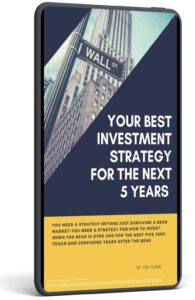Mid Term

March 14, 2018 | Daily JAM, Mid Term, Volatility, You Might Have Missed |
Today the White House announced that President Donald Trump has picked Larry Kudlow to replace Gary Cohn as director of the White House National Economic Council. Kudlow worked as an economic advisor to President Reagan where he was a dedicated believer in supply-side economic policies, and he is known as an advocate of expanding global trade. I believe Kudlow’s appointment to the job of the administration’s top economic adviser just about assures that the President will announce a big package of tariffs (and maybe other measures) aimed at China within the next week or two. Such a package would certainly increase the chances of a trade war between the United States and China.

March 14, 2018 | Daily JAM, Mid Term, Morning Briefing |
U.S. retail sales fell for a third straight month in February–down 0.1%. The Commerce Department revised January sales higher than the initially reported 0.3% decline. But that still left January sales down 0.1%. That means that February marks a third consecutive decline in retail sales–the first time that’s happened since April 2012. Economists surveyed by Reuters had forecast retail sales had climbed 0.3% in February.

March 9, 2018 | Daily JAM, Mid Term, Volatility, You Might Have Missed |
It’s only March but I’m rethinking my take on 2018.When the calendar pages turned over into 2018, my take on the year was that for stocks the first half would be much like 2017: Despite rising interest rates from the Federal Reserve, there was enough earnings growth to move stocks up even from near record highs. The bond market would be more problematic with those interest rate increases keeping downward pressure on bond prices and upward pressure on bond yields. With inflation still relatively quiescent, though, the downward trend in bond prices would be relatively gradual. It was the second half of the year that investors had to worry about, I thought then.

March 7, 2018 | Daily JAM, Mid Term |
The door had barely closed on White House economic adviser Gary Cohn before the winning side in the White House trench warfare on trade began floating proposals to crack down on China. Peter Navarro, who has emerged, along with Commerce Secretary Wilbur Ross, as the point man for the Trump administration’s trade policy, has long been an advocate of an aggressive policy to limit Chinese exports to the United States and Chinese investments in the U.S. companies.

March 5, 2018 | Daily JAM, Mid Term, Morning Briefing |
Meeting in Beijing today, the National People’s Congress approved plans laid out by President Xi Jinping and Premier Li Keqiang to set the target for economic growth at 6.5% for the next year and to reduce the government deficit to 2.6% of GDP from the 3% of the last two years.

March 1, 2018 | Daily JAM, Mid Term, Morning Briefing |
In his testimony this morning before the Senate Finance committee new Federal Reserve chair Jerome Powell said, There’s “no evidence of the economy overheating.” Today’s economic data have raised doubts in the market about Powell’s conclusion.

February 26, 2018 | Daily JAM, Mid Term |
On Thursday February 22, Goldman Sachs said in a note to clients that the economic macro data as likely to be “as good as it gets.” This isn’t, in my opinion, a call for an immediate plunge in the markets. But with U.S. stocks trading near all time highs, I think the Goldman note is something all investors need to take seriously. Or at least the question it raises needs to be taken seriously. Here’s the question: If stocks are at all time highs and the economic data on economic growth, inflation, interest rates, etc. are as good as they’re going to get for this cycle, why should stocks move higher?

February 26, 2018 | Daily JAM, Mid Term, Morning Briefing |
Ahead of congressional testimony tomorrow by new Federal Reserve Chairman Jerome Powell, Wall Street is buzzing with speculation that the Powell Fed will be willing let inflation run higher than its current target of 2%. Maybe as high as 2.5%.

February 16, 2018 | Daily JAM, Mid Term, Morning Briefing |
As of yesterday the Standard & Poor’s 500 stock index has climbed 5.8% in the last five trading sessions. That recouped much of the 9.03% drop (not quite an official correction of 10% or more) from January 26 through Februry 8. Which, of course, raises the question of what lies ahead–A rapid climb back through the old high of 2872.87 to new records (a classic V-recovery) or a move back to near the old high, followed by a failure at that level and a deeper correction of, say, 15%?

February 14, 2018 | Daily JAM, Mid Term, Morning Briefing |
Headline CPI (Consumer Price Index) inflation climbed 0.5% in January, the Labor Department announced today. That was above the 0.4% increase expected by economists surveyed by Briefing.com. Core CPI, which excludes more volatile food and energy prices, climbed 0.3% in January. Economists surveyed by Briefing.com had expected a 0.2% increase.

February 13, 2018 | Daily JAM, Mid Term, Morning Briefing |
Today Goldman Sachs projected that the yield on the Treasury 10-year note will climb as high as 3.5% in the next six months. In addition, the Wall Street giant told Bloomberg, the U.S. Federal Reserve will raise rates four times in 2018. The yield on the 10-year Treasury finished at 2.85% yesterday after trading as high as 2.89%, a four-year high.

February 9, 2018 | Daily JAM, Mid Term, Morning Briefing |
Notice that the signing of a bill early this morning to keep the government open and to fund operations for two years hasn’t resulted in a serious rally in either stocks or bonds. And mind you, this deal also “solves” the debt ceiling crisis by suspending the debt ceiling until March 2019. That passes for statesman-like foresight in Washington these days and this certainly counts as good news. So why no big upside move on these events?














